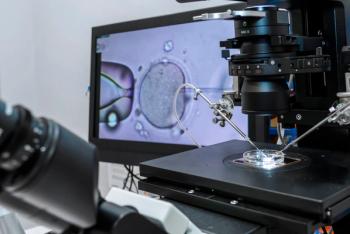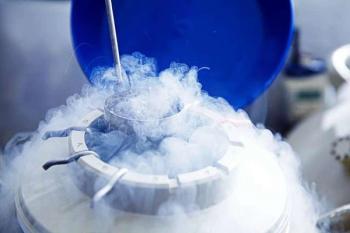
New Uses of Ultrasound in the Treatment of Infertility
OBGYN.net Conference CoverageFrom 55th Annual Meeting of ASRM held conjointly with CFAS- Toronto, Ontario, Canada - September, 1999
Barbara Nesbitt: "I'm Barbara Nesbitt at the American Society of Reproductive Medicine in Toronto, Canada with Dr. Alan Copperman, who is the Director of Reproductive Medicine at Mount Sini Hospital in New York, and also a member of the Editorial Advisory Board of Infertility at OBGYN.net. Dr. Copperman has just done a presentation on ultrasound. Would you please tell us about it?"
Dr. Copperman: "Thank you, Barbara."
Barbara Nesbitt: "You're welcome."
Dr. Copperman: "The advent of ultrasound has helped us dramatically in infertility, first we started with transabdominal ultrasound years ago, and all of our patients had full bladders, and we were having a very hard time even seeing the pelvic organs. We went to transvaginal ultrasounds ten years ago, and in the last year or two - three dimensional ultrasound has come on to the scene where we not only have a overview of the uterus and ovaries, but we can really get inside and start to pick out some details and use computer imaging to help us understand the anatomy better and help us diagnose different abnormalities. Endometriosis, fibroids, polyps - have all become easier to pick up and easier to figure out exactly where they are. What I've done is taken a look at early first trimester ultrasounds. Several of our patients have suffered from recurrent miscarriages, and it is extremely important to make the diagnosis early of exactly what the chances are of their continuing on a normal healthy pregnancy or if they are destined to have another miscarriage. I think it is something they would want to know earlier, so from an informational point of view, it is so important to make the early diagnosis. So what we've done is look at several different parameters in the early pregnancy - how big and round the sac is, how big and what the measurements are of certain tiny structures within the sac - especially the yolk sac which is one of the earlier structures that we can see. The yolk sac it turns out, if it is larger than 5% of the volume of the whole gestational sac - almost all patients miscarried. This is a finding that really hasn't been described before and is only obtainable using this high-resolution three-dimensional sonographic technique. What we're also doing is taking a look at some of the normal and abnormal factors about twin and even triplet pregnancies. We hope to be able to really come up with nomograms and some good solid definitions of what normal is, what abnormal is, and enable us to help our patients better understand their particular pregnancies.
Barbara Nesbitt: "It's certainly come a long way, and I think reproductive medicine has come a tremendously long way in the last few years."
Dr. Copperman: "It is so exciting, patients that we never dreamt that we'd be able to help five, ten years ago, we're now able to help almost routinely. Patients who have husbands with zero sperm - we're taking the sperm from the testicles and achieving pregnancies at a high rate. Patients with inherited diseases - we're biopsing embryos. Advents in surgery have enabled us using high-resolution sonograms to treat endometriosis and to treat fibroids laparoscopically. We're living in a very exciting time, and I'm enjoying this meeting and learning about new ways that we're going to help patients over the next couple of years."
Barbara Nesbitt: "Thank you, Dr. Copperman. It's a pleasure talking to you."
Dr. Copperman: "Thank you, Barbara."
Barbara Nesbitt: "Nice to have you on the board."
Newsletter
Get the latest clinical updates, case studies, and expert commentary in obstetric and gynecologic care. Sign up now to stay informed.















